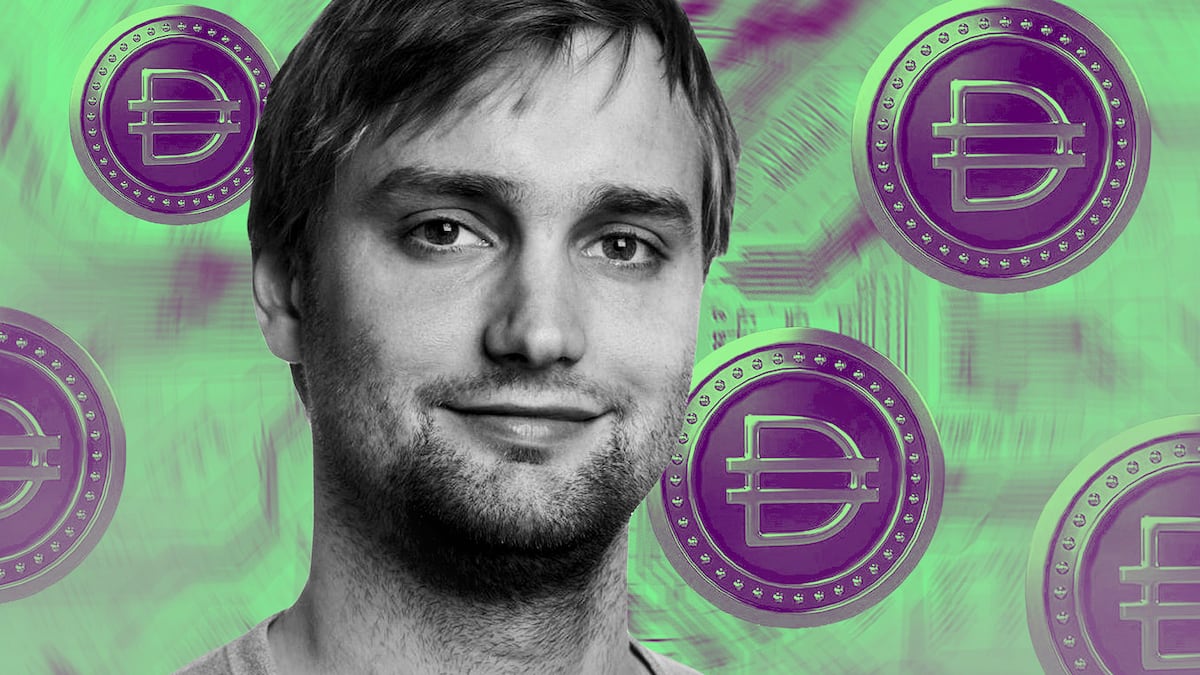- In August, MakerDAO raised the yield for Dai to 8% to create sustainable growth and capital inflows. It has since lowered the yield to 5%.
- Some DAO members say the strategy is unsustainable and “brought in whales to bleed the coffers” of the community.
- Others have backed co-founder Rune Christensen’s plan.
- Term Finance and Gnosis are among other projects that have been impacted by the raise.
DeFi users flock to Dai after issuer MakerDAO increased yields on the stablecoin at the start of the month.
Since the community raised the yield to 8% on August 6, the Dai market cap — the amount of the dollar-pegged stablecoin in circulation — has jumped over 25% to $5.2 billion.
While some members of the decentralised autonomous organisation behind Maker have applauded the raise, others have rejected the notion that it was a success.
“It just brought in whales to bleed the coffers by borrowing at less than the Dai savings rate,” PaperImperium, a MakerDAO community member and governance liaison for GFX Labs, told DL News.
The yield rise has also caused ripples further afield, with several other DeFi protocols benefiting from the jump.
The schism kicked off on August 4 when MakerDAO token holders passed a vote to up the yield offered to Dai holders from around 3% to 8%, per a proposal from MakerDAO co-founder Rune Christensen as part of his endgame plan.
Christensen wanted to boost the Dai yield to “generate sustainable growth in new demand and capital inflows” to Dai and Maker, according to the proposal.
Soon after the vote passed, the Dai market cap jumped to 5.4 billion as DeFi users rushed to take advantage of the higher yields.
The Dai surge comes despite a continued decline in the stablecoin market, which fell from a $124 billion peak in early 2022 to around $74 billion today.
“The Dai savings rate increasing to 8% increased deposits by 300%,” Doo Wan Nam, co-founder of DAO research and advisory firm StableLab and former MakerDAO delegate, told DL News. “I think it’s reasonable to think that it had a big impact.”
What Nam is referring to is deposits to Spark Protocol, a lending protocol run by Phoenix Labs, a blockchain research and development firm launched by MakerDAO.
Spark Protocol lets users deposit Dai to receive sDai — a yield bearing receipt token similar to liquid staking tokens like Lido’s stETH.
According to Tom Wan, a crypto research analyst at 21.co, the possibility of a Spark Protocol airdrop for early users is also increasing demand for Dai. He said that many users arbitraged the difference between Dai borrow rates and the 8% Dai savings rate to profit.
“Borrowers can capture the spread between the borrowing rate of Dai and the Dai savings rate, which can yield around a 4% margin,” he said.
But the 8% Dai yield was short-lived.
NOW READ: Everything is about to change at MakerDAO: Rune Christensen on his Endgame plan
After increasing Dai in circulation by over one billion in less than a week, Christensen put forth another proposal on August 8 to lower the savings rate to 5%.
Christensen cited the “rapid success” of the 8% rate in boosting Dai use, but cautioned that a lower rate would be necessary to stop large accounts taking advantage of the yield and for the long-term health of the Maker protocol. The proposal passed and was executed on August 20.
In response to the yield drop, the Dai market cap shrunk by around $200 million overnight as mercenary capital withdrew funds. The Dai market cap has since stabilised at around 5.2 billion.
Split opinions
The episode has split opinions within the MakerDAO community. On the one hand, handing out rewards to Dai holders helped MakerDAO stem Dai’s bleeding market cap and turn around its fortunes.
But critics of Christensen’s plan argue that the boost in Dai adoption is likely temporary and unsustainable.
“I don’t think it was successful,” PaperImperium told DL News, saying that giving out the 5% yield — which comes directly from MakerDAO’s coffers — would be unsustainable, unless the amount of Dai holders taking advantage of it through Spark Protocol remained low.
PaperImperium’s reasoning is that while Maker’s revenues from its US Treasury Bond holdings should cover the 5% yield, getting that money onto the Ethereum blockchain may be easier said than done.
‘The trouble is that much of Maker’s revenues are off chain. Very little has, in practice, returned for a variety of reasons’
— PaperImperium
“The trouble is that much of Maker’s revenues are off chain. Very little has, in practice, returned for a variety of reasons,” he said. “It’s imaginable if it went on long enough that Maker would have to figure that out, and perhaps discover some assumptions made were incorrect.”
Others have also pointed out drawbacks to using the high Dai savings rate to boost growth.
NOW READ: Magic Eden wants to drag NFTs from ‘ultra bear market’ with $1m creator fund
According to Wan, “solely relying on the high-yield strategy may not be the best option.”
He said top stablecoins such as Tether’s USDT and Circle’s USDC have gained a significant market share without providing a high saving rate to holders.
USDT is currently the biggest stablecoin in crypto with a market cap of over $82 billion.
“Ultimately, the growth of a stablecoin depends on utility and adoption,” Wan said. “Without a concrete use case, the stablecoin will have a lot of mercenary holders, who will abandon Dai whenever there is a better yield opportunity.”
However, other MakerDAO stakeholders are more optimistic.
Nam said he thought increasing the Dai savings rate was successful, and that he believes the 5% yield is sustainable, assuming that up to half of all Dai in circulation would eventually be deposited to Spark protocol.
“If total Dai supply didn’t change, then it might be fair to say it wasn’t a success. But considering the Dai market cap did indeed increase, it means overall Dai finance became more resilient.”
Wider benefits
It’s not just MakerDAO and its associated projects that appear to have benefitted from the Dai market cap boom.
Term Finance, a DeFi protocol offering fixed term interest rate loans, received nearly $1 million worth of demand for its first sDai auction.
“We expected about half of that,” Billy Welch, co-founder Term Labs, the company behind Term Finance, told DL News.
“As a high quality yield generating asset, sDai is good collateral to borrow against, and right now there are not very many protocols offering the ability to borrow against it,” he said.
NOW READ: Grayscale defeats SEC in court as ruling clears obstacle to Bitcoin ETF
Elsewhere, demand for Dai yield is travelling to more blockchains than Ethereum.
Martin Köppelmann, co-founder and CEO of the Gnosis blockchain, told DL News he thought increasing the Dai savings rate “was successful as it triggered a lot of people and projects to integrate sDai.”
Köppelmann explained that Gnosis was currently working on an integration so that Dai locked in bridges between Gnosis and Ethereum would earn the full Dai savings rate yield.
“We had planned to do the bridge thing for a long time but when they hiked up the rate to 8% it certainly became a priority,” he said.
Tim Craig is DL News’ Edinburgh-based DeFi Correspondent. Reach out to him with tips at tim@dlnews.com.
Disclosure: Tim holds over $1,000 worth of Ether, Swell staked Ether, Redacted Cartel, and GMX. He also holds an insignificant amount in NFTs.



